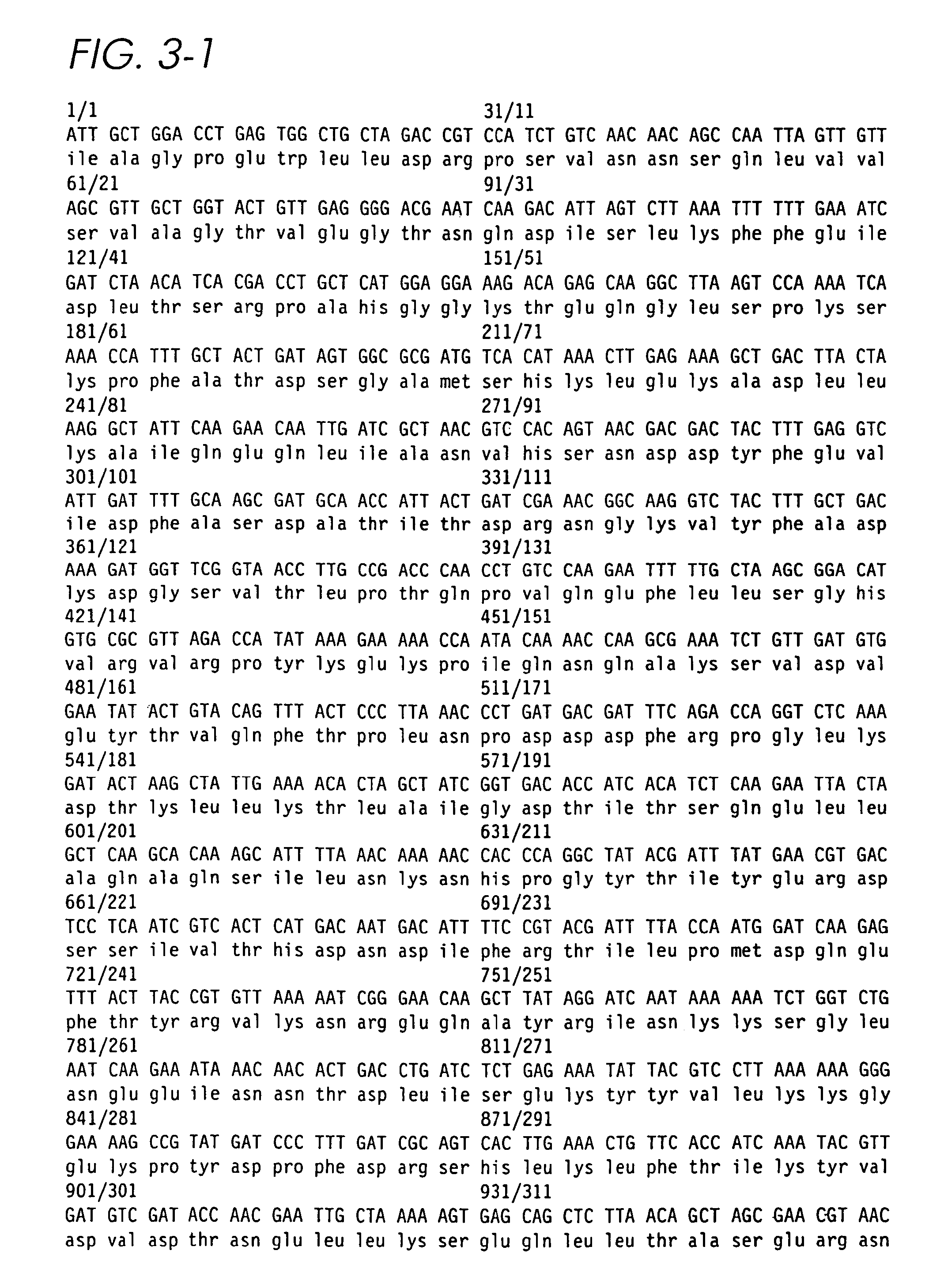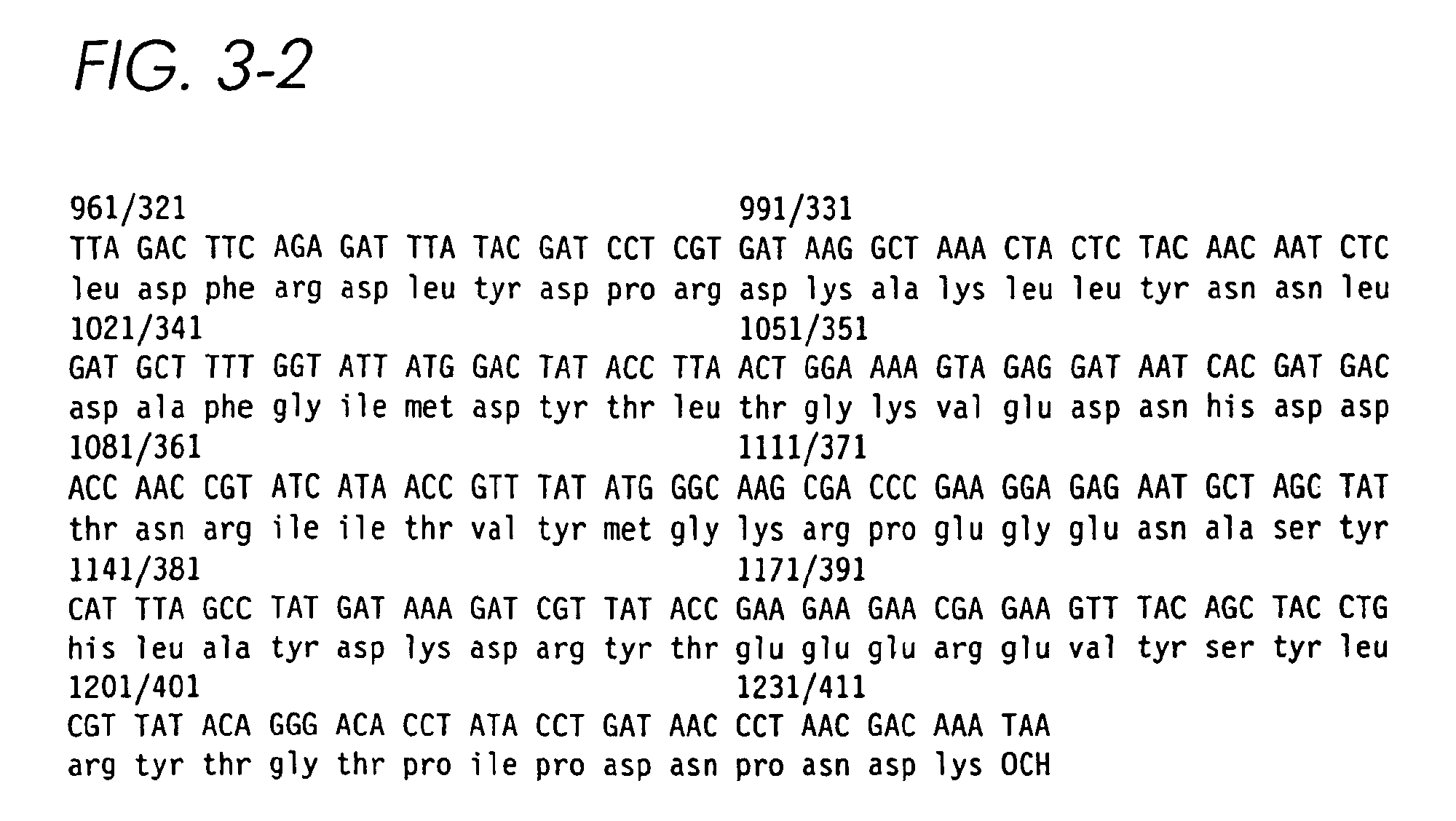Method of making a plasminogen activator polypeptide with clot-specific streptokinase activity
a technology of plasminogen activator and clot, which is applied in the field of making a plasminogen activator polypeptide with clot-specific streptokinase activity, can solve the problems of serious limitation in the description of a drug, the advantage of further addition of such domains is likely to be minimal, and the complications of hemorrhag
- Summary
- Abstract
- Description
- Claims
- Application Information
AI Technical Summary
Benefits of technology
Problems solved by technology
Method used
Image
Examples
example 1
[0111]High level intracellular expression of biologically Streptokinase in E. coli. In order to express native-like, full S. equisimilis strain H46A Streptokinase intracellularly in E. coli the SK-encoding polynucleotide block was transferred from the plasmid vector construct pJKD-55 by digesting with Nco I and Sal I restriction enzymes (R.E.) which liberated the SK open-reading-frame (ORF). Plasmid pJKD-55 contained the streptokinase gene which was isolated from Streptococcus sp. (ATCC 12449), also referred to conventionally in the scientific literature as S. equisimilis strain H46A, by known procedure earlier reported for the molecular cloning of SK gene and its expression in heterologous hosts such as E. coli (Malke, H. and Ferretti, J. J., 1984; Proc. Nat'l Acad. Sci. 81: 3557; Pratap, I., Kaur, J., Rajamohan, G., Singh, D., and Dikshit, K. L., 1996; Biochem. Biophys. Res. Commun. 227: 303). The latter publication describes the procedures by which the SK gene was cloned in E. co...
example 2
[0124]Harvesting of intracellularly expressed SK from E. coli, purification of SK protein, and characterisation of highly pure and biologically active SK.
[0125]Glycerol stocks of E. coli BL-21 strain harbouring plasmid pET23(d)SK-NTR, maintained at −70 C., were used to prepare a seed culture by inoculating freshly thawed glycerol stock (approx. 100 uL) into 100 ml of LB medium (in a 500 ml conical flask) containing 50 ug / ml of ampicillin. The flask was incubated at 37° C. with shaking on a rotary shaker at 200 r.p.m. for 16 h. This culture was used to seed four 2 L Erl nmeyer flasks each containing 500 ml of the same medium (LB-Amp) using 5% (v / v) of inoculum. The flasks were incubated at 37° C. with shaking (200 r.p.m.) for a duration till the absorbance at 600 nm had reached 0.5-0.6 (.about.2 h after inoculation). At this time, IPTG was added to the cultures to a final conc. of 2 mM and incubation, as before, continued for a further 3 h. The cultures were then chilled on ice and p...
example 3
[0128]Construction of a hybrid DNA polynucleotide between SK-encoding DNA and fibrin binding domains 4 and 5 encoding DNA of human fibronectin, its expression in E. coli, oxidative refolding, and purification of biologically active chimeric protein.
[0129]The scheme followed for the construction and expression of a chimeric (hybrid) polynucleotide DNA block formed between the DNA encoding for residues 1 to 383 of SK followed by in-frame joining to the DNA coding for the FBD 4 and 5 of human fibronectin is shown in FIG. 16. A short linker DNA segment, coding for 3 glycine residues, in tandem, between the two polynucleotide-segments was incorporated into the design (termed ‘intergenic sequence’) (see FIG. 15) so as to provide flexibility to the expressed chimeric polypeptide product. In addition, a new terminator codon was introduced at the end of the FBD(4,5) DNA so that the hybrid ORF encoded for a polypeptide ending after the two FBDs. Thus, the design essentially had the following ...
PUM
| Property | Measurement | Unit |
|---|---|---|
| pH | aaaaa | aaaaa |
| pH | aaaaa | aaaaa |
| constant current | aaaaa | aaaaa |
Abstract
Description
Claims
Application Information
 Login to View More
Login to View More - R&D
- Intellectual Property
- Life Sciences
- Materials
- Tech Scout
- Unparalleled Data Quality
- Higher Quality Content
- 60% Fewer Hallucinations
Browse by: Latest US Patents, China's latest patents, Technical Efficacy Thesaurus, Application Domain, Technology Topic, Popular Technical Reports.
© 2025 PatSnap. All rights reserved.Legal|Privacy policy|Modern Slavery Act Transparency Statement|Sitemap|About US| Contact US: help@patsnap.com



